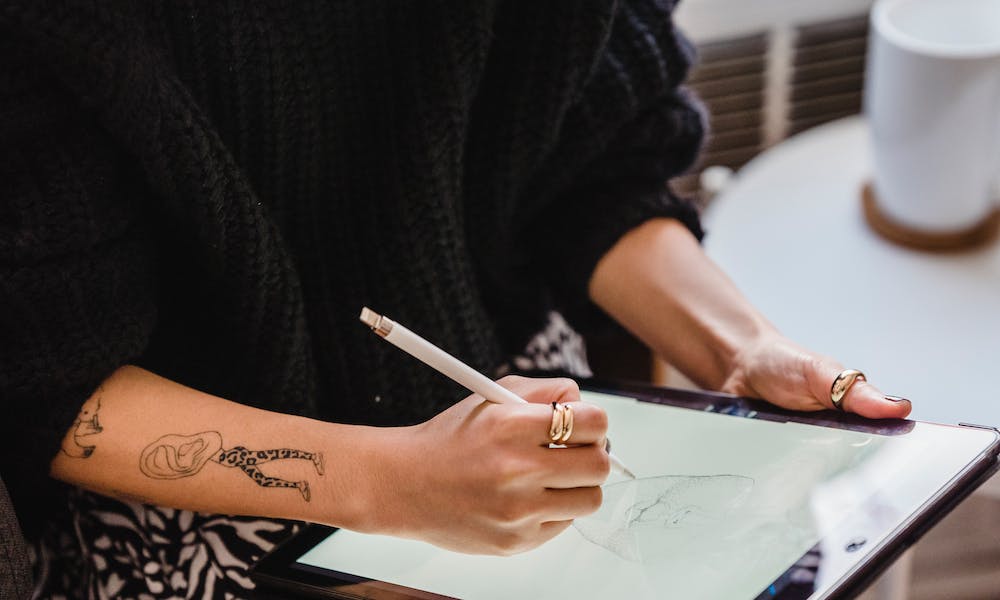The fashion sector experiences new trends all the time. New types of fabric and clothing designs come out often.
Fabric patterns and textures today change faster than has ever been thought. In the past, fashion stylists drew sketches on paper. Today, they use computers to draw complex sketches in minutes. All these have been brought about by digital tools and innovation. Professionals in the sector connect to a global community.
They solicit ideas and receive feedback from a global audience. The sector has created more jobs and produces more for the market. Designers use technology to create online stores that enhance engagement.
Traditionally, they draw sketches by hand and replicate them on fabric. Computers have helped make the work easier. It provides digital sketching software to designers. It has offered them an effective substitute for traditional sketching techniques. Fashion designers today convert ideas into digital sketches on screens.
The speed and the process have significantly increased. It allows them to experiment with different shapes and textures. Due to technology, it is simpler for them to draw or redraw their ideas. These possibilities have come due to the evolution of technology in fashion.
Fashion designers impact society by influencing what they wear. They influence how they express themselves through clothing. Society may wonder what tools do fashion designers use. One of their main tools is a MacBook. One designer might own multiple Macs. They might have a computer at home, and another in their design store. They might have challenges when they need to connect computers remotely. One of the solutions is to perform Mac to Mac transfer. The process is not complicated because all they just need to do is sync two Macs. This makes file sharing on Mac simple through a remote desktop.

Technology in the fashion industry cuts across many areas. It impacts both clothing design and fabric manufacturing. Digital fabric printing has made a significant impact on the sector. It has scaled production making it possible to produce smaller MOQs. Fabric printers today boast speedier production with enhanced flexibility.
The digital world has promised sustainability through environmentally friendly options. These are options conventional fabric printing techniques could not offer. Players in the sector today print with greater accuracy. They create complex patterns right on their screens. They produce fabric with vivid hues and broad ranges of colors. They create customized designs that meet the tastes of different individuals. The use of technology in fashion has broadly benefited the fabric printing sector.
- Fashion designers can order samples for their clients at a lower cost.
- Producers supply small and large order quantities within a minimum time.
- Fabric printers no longer need to invest large amounts of capital to start the business or scale it.
- They create attractive and unique designs that showcase their creativity.
- They create fabrics that are breathable and lightweight which leaves the wearer feeling comfortable.
Due to technology in fashion, customers have broad-based shopping options. They visit multiple fashion stores where they compare prices. Their goal is to find the cheapest clothing. This freedom is necessary in the clothing market. However, it might be viewed as a negative impact of technology on fashion industry. On the contrary, it creates competition. This pushes fashion designers to be more creative. 3D modeling is one of the technologies that came about due to competition. It provides an array of benefits in the sector.
- It allows designers to create virtual prototypes of designs.
- Consumers on the other hand visit the e-stores to try out the products. This helps save on the costs required for creating samples.
- Virtual prototypes enhance collaboration between stakeholders. They work as one team to ensure they meet demand at all levels.
- Fashion design software such as CAD has transformed the sector. It has changed the way designs and patterns are made. It has eliminated the need for traditional paper drawing.
- If there is a need for modifications, designers can do so fast. They reduce waste during production which is beneficial to the environment.
Fashion and technology go beyond printing fabric and drawing sketches. It goes into the consumer market where designers engage with buyers. E-commerce is helping fashion professionals reach a worldwide audience. They create e-stores and present their products. They deploy AR programs that let shoppers try out new fashions virtually. They quickly share feedback which allows designers to gather more ideas. Such inspirations are useful for an evolving fashion market.
Conclusion
The incorporation of digital technologies has changed the fashion sector significantly. Designers no longer create hand-drawn sketches. Instead, they use screens to complete the process in no time. Fabric producers create fabric with intricate patterns and printing. 3D modeling lets consumers test designs using prototypes. The industry has a promising future. Technology has availed sustainable possibilities and inventions to designers.
##




